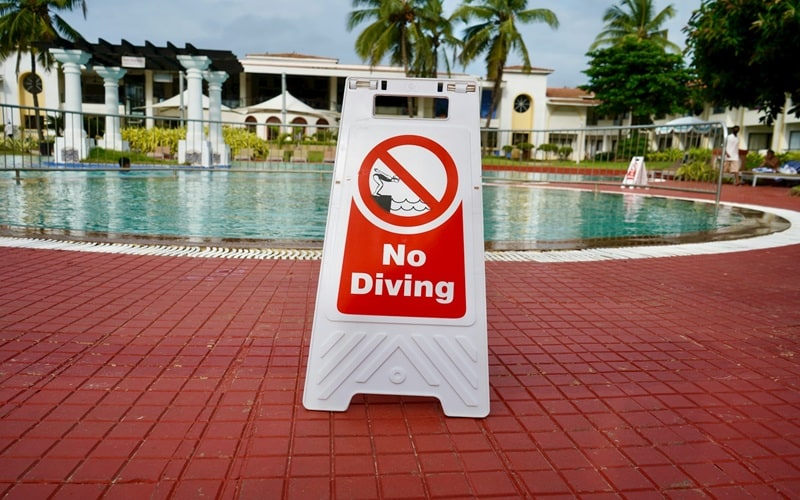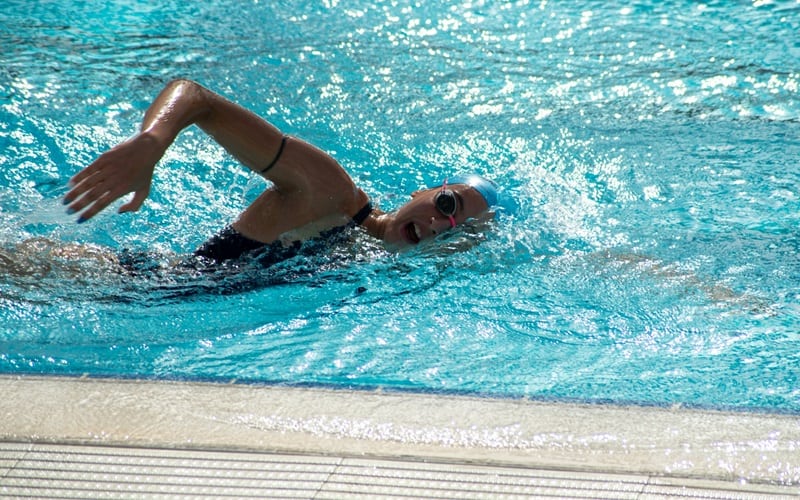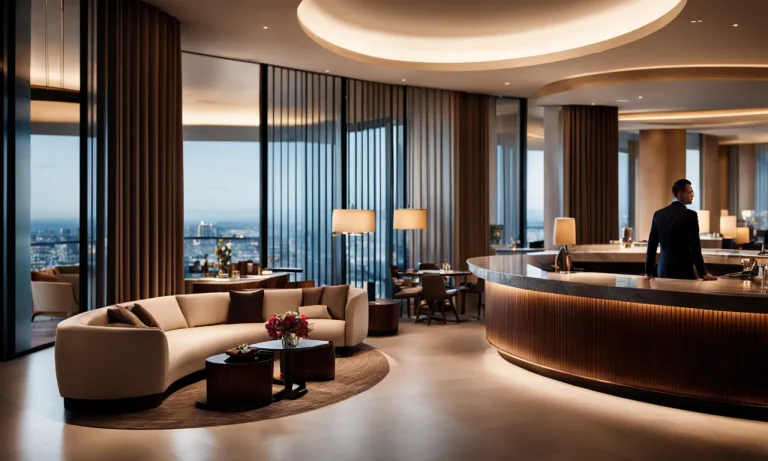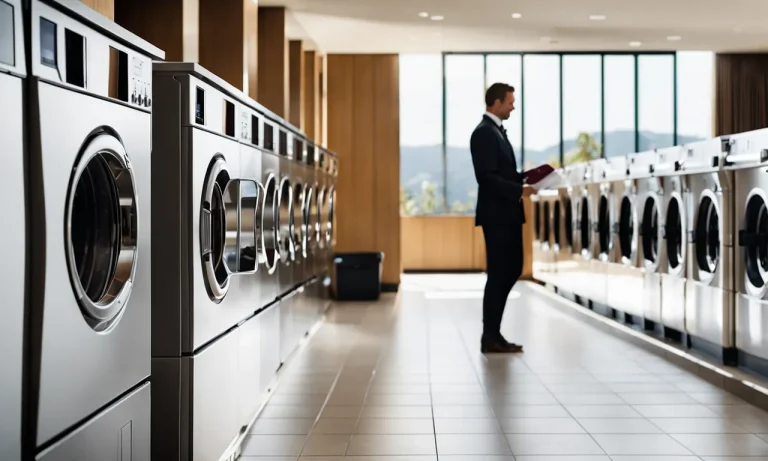Taking a dip in the pool is one of the best parts of a hotel stay. But before jumping in, you may be wondering – how deep is the average hotel pool?
If you’re short on time, here’s a quick answer: Hotel pools typically range from 3 to 5 feet deep for the main swimming area. The shallow end is around 3 feet deep, while the deep end may go up to 5 feet or more.
In this comprehensive guide, we’ll dive into hotel pool design regulations, standard pool depths, differences between pools at full-service and budget hotels, tips for staying safe, and what to do if you have concerns about pool depth during your stay.
Hotel Pool Design and Safety Regulations
Hotel pools are subject to strict regulations and safety standards imposed by state and local laws, as they are considered public pools. These regulations are in place to ensure the safety and well-being of guests and to prevent accidents and injuries.
Hotel owners and managers must adhere to these regulations to maintain a safe environment for their guests.
Regulated by state and local laws as public pools
Hotel pools are classified as public pools, which means they are subject to the same regulations as other public swimming pools, such as those found in community centers or recreational facilities.
These regulations typically cover various aspects of pool design and safety, including slope degree, lighting, fencing, and other important factors.
Required to meet standards for safe slope degree, lighting, fencing, etc.
Hotel pool designs must meet specific standards to ensure the safety of swimmers. These standards may include guidelines for the slope degree of the pool floor, lighting requirements for proper visibility, and fencing specifications to prevent unauthorized access.
By adhering to these standards, hotel owners can create a safer environment for their guests to enjoy their swimming experience.
Must display depth markers, ‘No Diving’ signs
In addition to meeting specific design standards, hotel pools are also required to display depth markers and ‘No Diving’ signs. Depth markers indicate the depth of the pool at different points, allowing swimmers to determine the appropriate areas for their skill level.
‘No Diving’ signs are essential to prevent accidents and injuries that can occur when diving into shallow areas of the pool.

Depth ranges based on minimum requirements
The depth of hotel pools may vary depending on the specific requirements set by state and local regulations. While the exact depth ranges can differ, they are typically based on minimum requirements to ensure the safety of swimmers.
It is important for hotel owners and managers to be aware of these requirements and ensure that their pool depths comply with the regulations.
For more information on pool design standards and safety regulations, you can visit websites such as the Centers for Disease Control and Prevention or the National Swimming Pool Foundation.
Typical Pool Depths at Hotels
When it comes to enjoying a refreshing swim at a hotel, understanding the pool design standards and safety measures is crucial.
One important aspect to consider is the depth of the pool. Hotel pools are designed with specific depth ranges to cater to different swimming abilities and ensure the safety of all guests.
Shallow end: 3 to 3.5 feet deep
The shallow end of a hotel pool typically ranges from 3 to 3.5 feet deep. This section is ideal for beginners, children, and those who prefer standing or playing in the water.
It provides a safe and comfortable environment for individuals who are not confident swimmers or who simply want to relax and enjoy the water without worrying about their feet touching the bottom.
Middle area: 3.5 to 4.5 feet deep
The middle area of the pool is slightly deeper, ranging from 3.5 to 4.5 feet. This depth is suitable for intermediate swimmers who can comfortably swim without touching the bottom.
It offers a balance between the shallow end and the deep end, allowing guests to practice their swimming skills or engage in water-based activities.
Deep end: 4.5 to 5 feet deep
The deep end of the pool is typically the deepest section, ranging from 4.5 to 5 feet deep. This area is designed for advanced swimmers who can confidently swim without touching the bottom.
It provides a challenge for those looking to improve their swimming abilities or enjoy diving and other water sports. Lifeguards are often present in this area to ensure the safety of guests.
Consistent slopes between depth changes
To ensure a smooth transition between different depths, hotel pools are designed with consistent slopes. These slopes allow swimmers to gradually move from the shallow end to the deep end without sudden changes in water depth. This design feature helps prevent accidents and ensures a safer swimming experience for all guests.
Understanding the typical pool depths at hotels is essential for both guests and hotel staff. It helps ensure the safety and enjoyment of everyone using the pool facilities. If you want to learn more about pool safety standards and best practices, you can visit websites such as the Pool Safely website, which provides valuable information and resources for pool owners and users.
Pool Depth Differences: Full-Service vs. Budget Hotels
When it comes to hotel pool depths, there are some key differences between full-service hotels and budget hotels. These differences can impact the overall pool design, safety standards, and the experiences of guests.
Understanding these differences can help you make an informed decision when choosing a hotel with a pool that suits your needs.
Full-service hotel pools may be larger and deeper
Full-service hotels often cater to a wide range of guests, including families, couples, and business travelers. As a result, their pool designs are typically more expansive and offer a greater range of depths. These pools are often built with multiple sections, including shallow areas for children and deeper areas for adult swimmers.
Full-service hotel pools may have a deep end that can reach up to 8 feet or more. This allows for diving and other water-based activities. The deep end is usually clearly marked and has safety measures in place to ensure guest safety, such as lifeguards or safety ropes.
Maximum 5 to 6 feet deep for lap swimming
For lap swimming, full-service hotel pools generally have a maximum depth of 5 to 6 feet. This depth is suitable for most swimmers and ensures a safe environment for exercise and recreational swimming. These pools often have marked lanes for swimmers to follow and may also offer equipment such as kickboards or pull buoys.
It’s important to note that the depth may vary slightly depending on the hotel’s specific pool design and regulations. Always check with the hotel for the exact pool depth if lap swimming is a priority for you.

Budget hotels more likely to have smaller 3 to 4 feet deep uniform pools
In contrast, budget hotels usually have smaller pools with a uniform depth of around 3 to 4 feet. These pools are designed primarily for relaxation and cooling off rather than for swimming laps or engaging in water sports. The smaller size and shallower depth make them more suitable for families with young children.
While these pools may be more basic in design, they still adhere to safety standards and are regularly maintained to ensure a clean and safe environment for guests. It’s worth noting that some budget hotels may not have lifeguards on duty, so it’s important to exercise caution and supervise children when using these pools.
Understanding the differences in pool depth between full-service and budget hotels can help you choose a hotel that best aligns with your preferences and needs. Whether you’re seeking a pool for exercise or simply want to relax and cool off, there are options available to suit every traveler.
Tips for Staying Safe in Hotel Pools
Take note of and obey depth markers and signs
When visiting a hotel pool, it is important to pay attention to the depth markers and signs posted around the pool area. These markers indicate the depth of the water at various points in the pool.
Obeying these markers is crucial for your safety, as diving or jumping into shallow water can lead to serious injuries. Remember, the depth of the water can vary from one end of the pool to another, so always double-check before entering.
Ask a lifeguard if you have any depth concerns
If you have any concerns about the depth of the pool or if you are unsure about the area you are swimming in, don’t hesitate to approach a lifeguard.
Lifeguards are trained professionals who can provide you with accurate information about the pool’s depth and any potential hazards. They are there to ensure your safety, so don’t hesitate to ask for their assistance.
Don’t dive or jump in if depth is unknown
When in doubt about the depth of the water, it is always best to err on the side of caution.
If you are unsure about the depth of the pool or if it is not clearly marked, refrain from diving or jumping in. It’s better to be safe than sorry, and avoiding unnecessary risks can help prevent injuries.
Supervise children closely
If you are at the hotel pool with children, it is crucial to supervise them closely at all times. Children can easily misjudge the depth of the water or underestimate their swimming abilities.
Make sure they are always within arm’s reach and keep a constant eye on them. Additionally, consider enrolling them in swimming lessons to enhance their water safety skills.

Wear slip-resistant sandals to avoid falls
The area around the pool can be slippery due to water splashes and wet surfaces.
To avoid slips and falls, it is recommended to wear slip-resistant sandals or flip-flops when walking around the pool. These types of footwear provide better traction and can help prevent accidents.
What to Do If Unsure About Pool Depth
If you find yourself unsure about the depth of a hotel pool, there are several steps you can take to ensure your safety and peace of mind.
Look for depth markers along the pool edge
One of the simplest ways to determine the depth of a pool is to look for depth markers along the pool edge.
These markers are typically located on the side of the pool and indicate the depth at different points. By referring to these markers, you can get a general idea of how deep the pool is in different areas.
Ask hotel staff or lifeguard for deepest level
If you are still unsure about the depth of the pool, don’t hesitate to ask the hotel staff or a lifeguard for assistance.
They are there to ensure your safety and can provide you with accurate information about the pool’s deepest level. Remember, it’s always better to ask and be sure than to take any unnecessary risks.
Reference pool safety info card in your room
In many hotels, you will find a pool safety information card in your room. This card often contains essential details about the pool, including its depth.
Take a moment to read through the card and familiarize yourself with the pool’s specifications. If you can’t find the card, don’t hesitate to contact the front desk for a replacement or to ask for the necessary information.
Request a pool with shallower depth if concerned
If you have concerns about the depth of the pool, don’t hesitate to speak up. You can request a pool with a shallower depth, especially if you are not a confident swimmer or have specific needs. Hotel staff will often do their best to accommodate your request and ensure that you can enjoy the pool safely.
Remember, it’s essential to prioritize your safety when using a hotel pool. By taking these steps and being proactive, you can have peace of mind and enjoy your swimming experience to the fullest.
Conclusion
Hotel pools must adhere to regulated depths and safety standards.
The typical hotel pool ranges from 3 to 5 feet deep, allowing most guests to enjoy swimming safely during their stay.
By paying attention to posted pool rules, using caution, and asking hotel staff when unsure, you can have fun while staying safe in any hotel pool environment.






